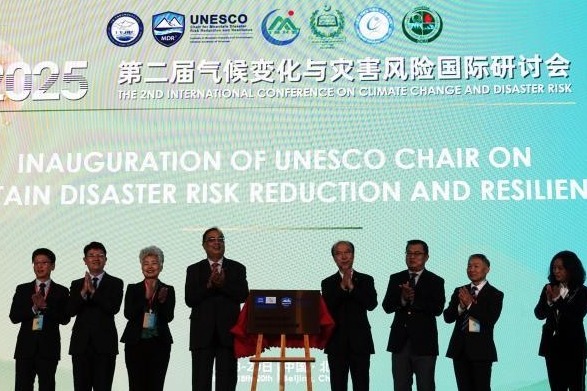Early winter grips Northern China as temperatures plummet

Most parts of northern China have entered winter earlier than usual, while temperatures across the country are expected to remain above or close to seasonal averages in the coming days, according to the National Climate Center.
Compared to the same period in previous years, winter arrived more than five days earlier in areas such as parts of Northeast China, North China, Northwest China and Central China, said Gao Rong, deputy director of the center.
Frequent but weak cold air activity is anticipated in the coming 10 days, with temperatures in most northern regions forecast to remain at 1 to 3 C above or close to the long-term average, Gao said at a news conference held by the National Meteorological Administration on Friday.
Meanwhile, persistent cloudy and rainy weather is also expected in parts of the southwest and southern regions. From Saturday to Tuesday, most of Southwest China, the Yangtze River's southern reaches and northern Guangxi Zhuang autonomous region will see light to moderate rain.
Furthermore, heavy rain is expected in parts of Sichuan, Yunnan, Guizhou, Hunan and Jiangxi provinces, while the eastern Qinghai-Tibet Plateau will experience moderate to heavy snow or sleet, with possible blizzards in some areas.
Parts of North and East China will see foggy conditions at times. Dense fog, with visibility below 200 meters in some areas, is forecast for some areas in North China on Saturday and again from Nov 7 to 8.
In November, parts of Northeast China and eastern Inner Mongolia autonomous region are expected to see more precipitation and lower temperatures than usual, raising the risk of low-temperature rain and snow disasters in the first 10 days of the month.
Local authorities are urged to make early preparations to protect greenhouses and livestock from cold and wind and to ensure transportation and power systems are ready for possible disruptions.
Due to warm and dry conditions, fire risk levels in forests are high in Jiangxi and Hunan provinces. The center is urging strengthened management of fire use in forests and enhanced wildfire prevention efforts.
In addition, authorities are also warning of potential flood and geological hazards in the south caused by persistent cold, rainy, or stormy weather.
Western and central parts of Southwest China and eastern Xizang autonomous region are expected to see above-normal precipitation in November. The center is calling for strengthened risk assessments and timely evacuation of people in vulnerable areas to prevent disasters such as flash floods and landslides.




































